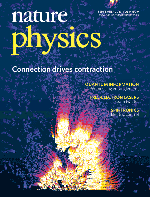Weblog
GloBIAS Launched!
Global Bioimage Analysts' Society (GloBIAS) officially launched on October 24th, 2024, aiming to promote a sustainable worldwide community of bioimage analysts. We registered the society in Austria. We compared the simplicity of the registration of a society in various countries, and the final choice was Austria. It was also that Gabriel Krens, the head of the imaging facility at the Institute of Science and Technology Austria (ISTA), kindly agreed to host the location of GloBIAS in his institute. We thank Gabriel tremendously for this generous support.
GloBIAS aims to support bioimage analysis experts, including analysts, software developers, and users of bioimage analysis. When we say “bioimage analysis”, it means “quantitative measurement of the parameters of biological systems using image data”. Nowadays, image data is more complex than what we generally perceive as “images” in our daily life. It is a form of data that captures the multidimensional state of biological systems. This means that the analysis of such data is beyond “image analysis” in the traditional sense - it is more about how we untangle that multidimensionality and come to some simpler view, looking at and understanding how biological systems are in operation. The future of this community is filled with many findings we have yet to know, and with excitement to explore the jungle of biological systems.
Bioimage Data Analysis Workflows ‒ Advanced Components and Methods
Since 2022, the third book from the NEUBIAS network has been available, with open access to all chapters. Enjoy!
Contents:
- Introduction (Nataša Sladoje and Kota Miura)
- Batch Processing Methods in ImageJ (Anna Klemm and Kota Miura)
- Python: Data Handling, Analysis and Plotting (Arianne Bercowsky Rama)
- Building a Bioimage Analysis Workflow Using Deep Learning (Estibaliz Gómez-de-Mariscal, Daniel Franco- Barranco, Arrate Muñoz-Barrutia and Ignacio Arganda-Carreras)
- GPU-Accelerating ImageJ Macro Image Processing Workflows Using CLIJ (Daniela Vorkel and Robert Haase)
- How to Do the Deconstruction of Bioimage Analysis Workflows: A Case Study with SurfCut. (Marion Louveaux and Stéphane Verger)
- i.2.i. with the (Fruit) Fly: Quantifying Position Effect Variegation in Drosophila Melanogaster (Bertrand Cinquin, Joyce Y. Kao and Mark L. Siegal)
- A MATLAB Pipeline for Spatiotemporal Quantification of Monolayer Cell Migration (Yishaia Zabary and Assaf Zaritsky)
Server moved
The web server hosting this wiki has moved from EMBL to InMotion. The move was rather straight forward, but as biii.info is in the subdomain, htaccess file was tweaked around to enable biii.info to stay as it is while moving only the wiki to be redirected from cmci.embl.de to cmci.info.
Anycase, InMotion seems to be fast enough for rendering (even though it's in US).
Nature Physics Sept. 2013 Cover Page
The ImageJ plugin "Temporal-Color Code" was used for the analysis of the contraction of actomyosin gel and now in the cover page of Nature Physics, September 2013 issue. D. L. Taylor's “Solation-Contraction Coupling” hypothesis now on the move.
http://www.nature.com/nphys/journal/v9/n9/full/nphys2715.html
Thanks to José Alvarado for his kind acknowledgement and a big applause for his successful publication!
To be in R programming course
I do write some scripts in R but not really serious programming. As I am interested in advanced use of R, I will be in the following course organized by Wolfgang Huber.
http://www-huber.embl.de/courses/2013-advR/
The course seems to match with my stage, as it explains
This course is designed for users who have experience with writing R scripts, and who now want to advance one step further, into producing more durable and robust software projects and code that is usable by others.
As I always have had a plan to migrate FRAPcalc program from IgorPro to R and also add some more functionalities, this course should be the one I should attend… I thank Wolfgang for his initiative in making this course available. Besides, I am happy to see another EMBL centre being active!


